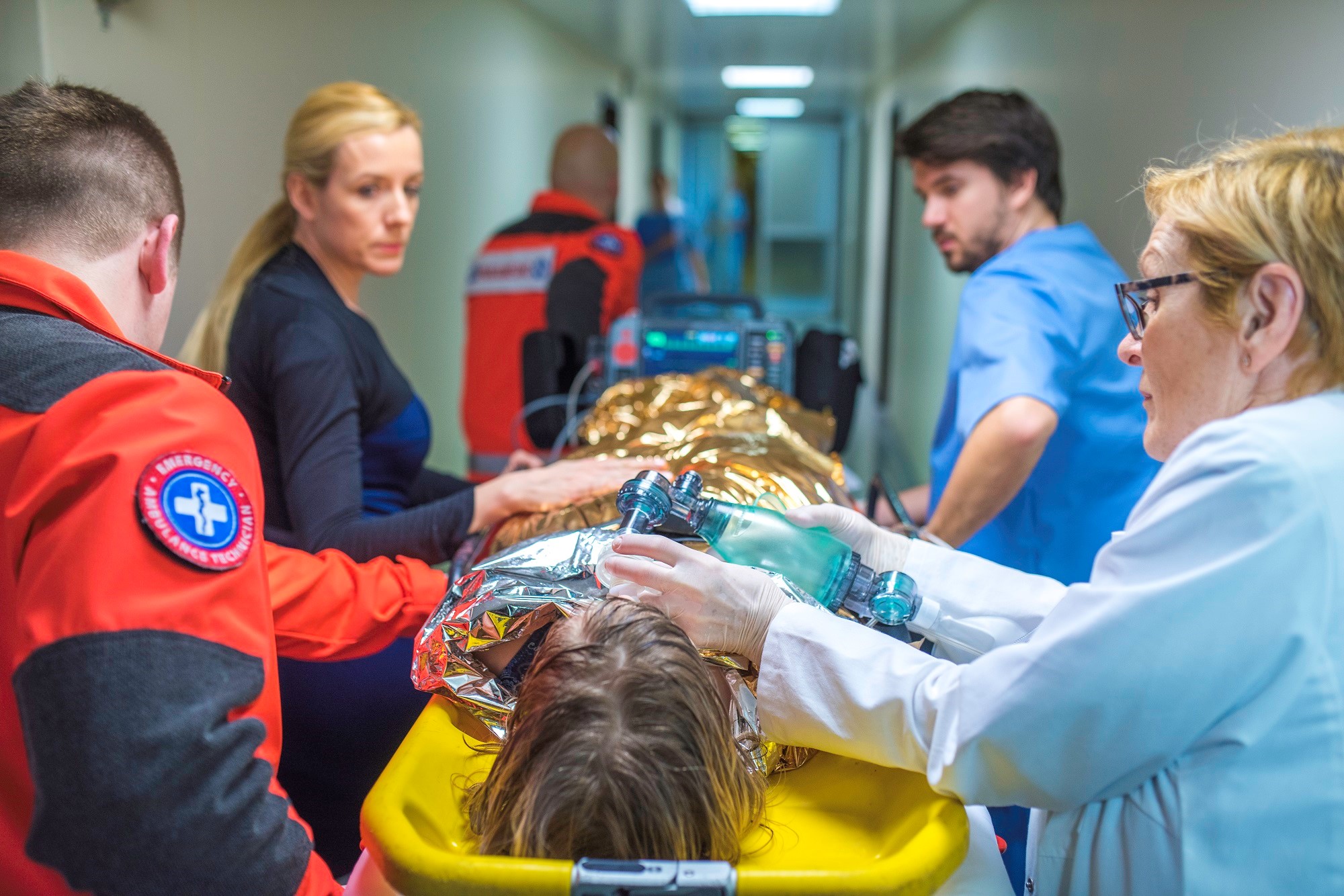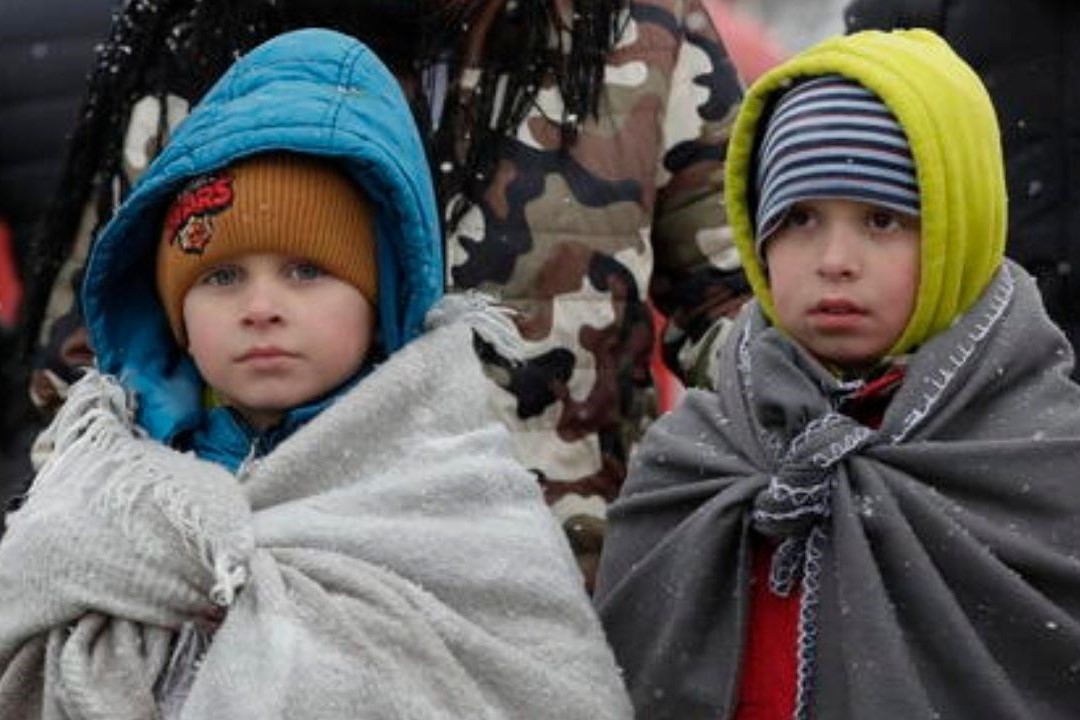
Hypothermia emergencies: how to intervene on the patient
Climate change and disaster management have heightened the importance of protocols relating to hypothermia emergencies, which must be known by the rescuer also for the management of everyday life
In fact, knowledge of hypothermia procedures is not superfluous, given the fragile population groups that have to deal with the rigors of the cold in every part of the world.
What Is Hypothermia?
Hypothermia is a severe medical condition where the body loses heat faster than it creates.
The average resting body temperature is 98.6 ºF (37 °C), and if the body’s core temperature goes below 95 ºF, then hypothermia occurs.
As the body temperature stays below 95 ºF (35 °C) or continues to drop, the body will start to shut down nonvital organs to keep the core warm.
Left untreated, the vital organs will shut down, leading to cardiac arrest and death.
What Are The Causes and Symptoms of Hypothermia?
Hypothermia is typically caused when a person has prolonged exposure to an extremely cold environment for an extended period.
In frigid temperatures, hypothermia can occur within a few minutes.
However, it can also happen when a person is exposed to mildly cold conditions, such as water below 70°F (21°C).
Cold water can be a very common and deadly cause of hypothermia as water can quickly channel heat away from the body.
The best defense against hypothermia in a cold environment is limiting the amount of exposed skin.
When to Call Emergency Number
Hypothermia is easily identified; however, the severity of hypothermia can be more challenging to ascertain.
The most effective way to gauge the severity of a person’s hypothermia is to check their mental status.
Even in the early stages, patients can become confused or unresponsive.
In the later stages of hypothermia, the patient may begin to take off clothes which increases the rate of heat loss.
This is referred to as paradoxical undressing, typically occurring during moderate and severe hypothermia, as the person becomes further disoriented and confused.
As hypothermia becomes more serious, it can become challenging to gauge vital signs.
Check blood glucose levels, as shivering can cause glucose to be used more rapidly.
When checking the patient’s pulse, it is critical to be thorough and take time.
The body’s lowered temperature causes vasoconstriction, making the pulse less pronounced and harder to detect.
Take 30 seconds to a minute to find the pulse.
If a person has a body temperature below 95 ºF (35 ºC), this can cause a medical emergency, and immediate medical attention may be required.
If a temperature cannot be taken, the most alarming symptom would be a lapse in an individual’s mental status. If an individual is shivering, cold, dilated pupils, rigid muscles, slow breathing or a slow heart rate, these symptoms may also cause immediate medical attention.
If medical attention is unavailable, the best action is to remove yourself from the cold environment and begin treatment.
How to Treat Hypothermia
You’ll need to restore the patient’s core temperature to combat hypothermia.
The first step to treating hypothermia is always to remove the patient from the cold environment.
This includes removing wet clothes, drying the skin, and covering the patient in a blanket or using heat packs in the armpits and on the groin and abdomen, plus warm IV fluids to start to generate heat.
Because the heart is at risk of a malignant cardiac rhythm, it should not be put through any undue stress.
Avoid moving the patient as much as possible and focus on generating heat for the patient’s body.
How Do EMTs and Paramedics Treat Hypothermia in The U.S.?
EMTs and Paramedics must have the proper training and equipment to treat hypothermia successfully.
Mild hypothermia can often be treated with passive warming; simply covering the patient with blankets, insulating them from the cold environment, and providing a warm beverage can help to restore a patient’s core temperature.
More sophisticated equipment is usually needed to restore a proper core temperature in severe cases.
One effective solution to restore the body’s temperature can be blood rewarming.
The patient’s blood is drawn, warmed in a hemodialysis machine, and then reintroduced to the body.
For filed EMTs who don’t have access to a hemodialysis machine, airway rewarming is a technique that can help rewarm a patient’s core temperature.
Airway rewarming uses a humidified oxygen mask or nasal tube that has been warmed to raise the body’s temperature.
What Are Some of The Necessary Tools That EMTs & Paramedics Require to Diagnose and Treat Hypothermia
- First and foremost, a well-prepared EMT should have a thermometer to track the patient’s temperature. Past the basic equipment needed to monitor the patient, there some useful equipment for field treatment of hypothermia is:
- Thermometer: To measure the body temperature.
- Blood pressure cuff: To monitor the blood pressure, which can drop in hypothermic patients.
- Oxygen masks: To provide supplemental oxygen, often needed in hypothermic patients struggling to breathe.
- IV fluids: To replace fluids lost due to cold exposure and to help warm the body from the inside out.
- Heating blankets: To warm the patient and prevent further heat loss.
- Monitoring equipment: To monitor the patient’s heart rate, breathing, and other vital signs.
- Stretcher: To transport the patient safely and comfortably to the hospital.
- Medications: To treat any associated conditions or complications, such as pain, anxiety, or heart problems.
- Making sure your kit is outfitted with the basics to help treat hypothermia can mean the difference between life and death for your patients.
EMT Response Training for Hypothermia
EMT training prepares individuals to respond to various emergencies, including cardiac emergencies such as heart attacks, traumas like bone fractures, dislocations, lacerations, and environmental emergencies such as conditions caused by exposure to hazardous substances, extreme temperatures, and other environmental factors.
EMT training includes didactic and hands-on components, where individuals learn to assess patients, stabilize them, and safely transport them to the hospital.
EMTs are also trained in infection control, communication, and ethical and legal considerations.
EMTS need to continue their education and training to stay up to date on the latest techniques and technologies in emergency medicine.
How to Avoid/Prevent Hypothermia
Hypothermia can be avoided even in cold environments by insulating the body from the colder outside air.
Recirculating body heat and reducing the amount of exposed skin can drastically reduce the chances of hypothermia even while in cold environments for an extended period.
Hypothermia is a common and potentially deadly condition.
As an EMT or Paramedic, identifying and being capable of treating hypothermia is a necessity.
Hypothermia can be caused by short exposure to extreme temperatures or extended exposure to mild temperatures.
The basic treatment for hypothermia includes warming the body to a normal temperature to prevent further damage.
Blankets and a warm drink can help in many mild cases, but in all cases, speedy and efficient attention for your patient to help prevent their hypothermia from becoming more severe is always required.
Read Also
Emergency Live Even More…Live: Download The New Free App Of Your Newspaper For IOS And Android
Treating Hypothermia: The Wilderness Medicine Association Guidelines
Mild Or Severe Hypothermia : How To Treat Them?
Traumatic Injury Emergencies: What Protocol For Trauma Treatment?
Cervical Collar In Trauma Patients In Emergency Medicine: When To Use It, Why It Is Important
What Is Traumatic Brain Injury (TBI)?
Pathophysiology Of Thoracic Trauma: Injuries To The Heart, Great Vessels And Diaphragm
Cardiopulmonary Resuscitation Manoeuvres: Management Of The LUCAS Chest Compressor
Chest Trauma: Clinical Aspects, Therapy, Airway And Ventilatory Assistance
Precordial Chest Punch: Meaning, When To Do It, Guidelines
Ambu Bag, Salvation For Patients With Lack Of Breathing
Blind Insertion Airway Devices (BIAD’s)
UK / Emergency Room, Paediatric Intubation: The Procedure With A Child In Serious Condition
How Long Does Brain Activity Last After Cardiac Arrest?
Quick And Dirty Guide To Chest Trauma
Cardiac Arrest: Why Is Airway Management Important During CPR?
Neurogenic Shock: What It Is, How To Diagnose It And How To Treat The Patient
Abdominal Pain Emergencies: How US Rescuers Intervene
Ukraine: ‘This Is How To Provide First Aid To A Person Injured By Firearms’
6 Facts About Burn Care That Trauma Nurses Should Know
Blast Injuries: How To Intervene On The Patient’s Trauma
What Should Be In A Paediatric First Aid Kit
Ukraine Under Attack, Ministry Of Health Advises Citizens About First Aid For Thermal Burn
Electric Shock First Aid And Treatment
RICE Treatment For Soft Tissue Injuries
How To Carry Out Primary Survey Using The DRABC In First Aid
Heimlich Maneuver: Find Out What It Is And How To Do It
The Patient Complains Of Blurred Vision: What Pathologies Can Be Associated With It?
A Tourniquet Is One Of The Most Important Pieces Of Medical Equipment In Your First Aid Kit
12 Essential Items To Have In Your DIY First Aid Kit
First Aid For Burns: Classification And Treatment
Compensated, Decompensated And Irreversible Shock: What They Are And What They Determine
Burns, First Aid: How To Intervene, What To Do
First Aid, Treatment For Burns And Scalds
Wound Infections: What Causes Them, What Diseases They Are Associated With
Patrick Hardison, The Story Of A Transplanted Face On A Firefighter With Burns
Eye Burns: What They Are, How To Treat Them
Burn Blister: What To Do And What Not To Do
Ukraine: ‘This Is How To Provide First Aid To A Person Injured By Firearms’
Emergency Burn Treatment: Rescuing A Burn Patient



